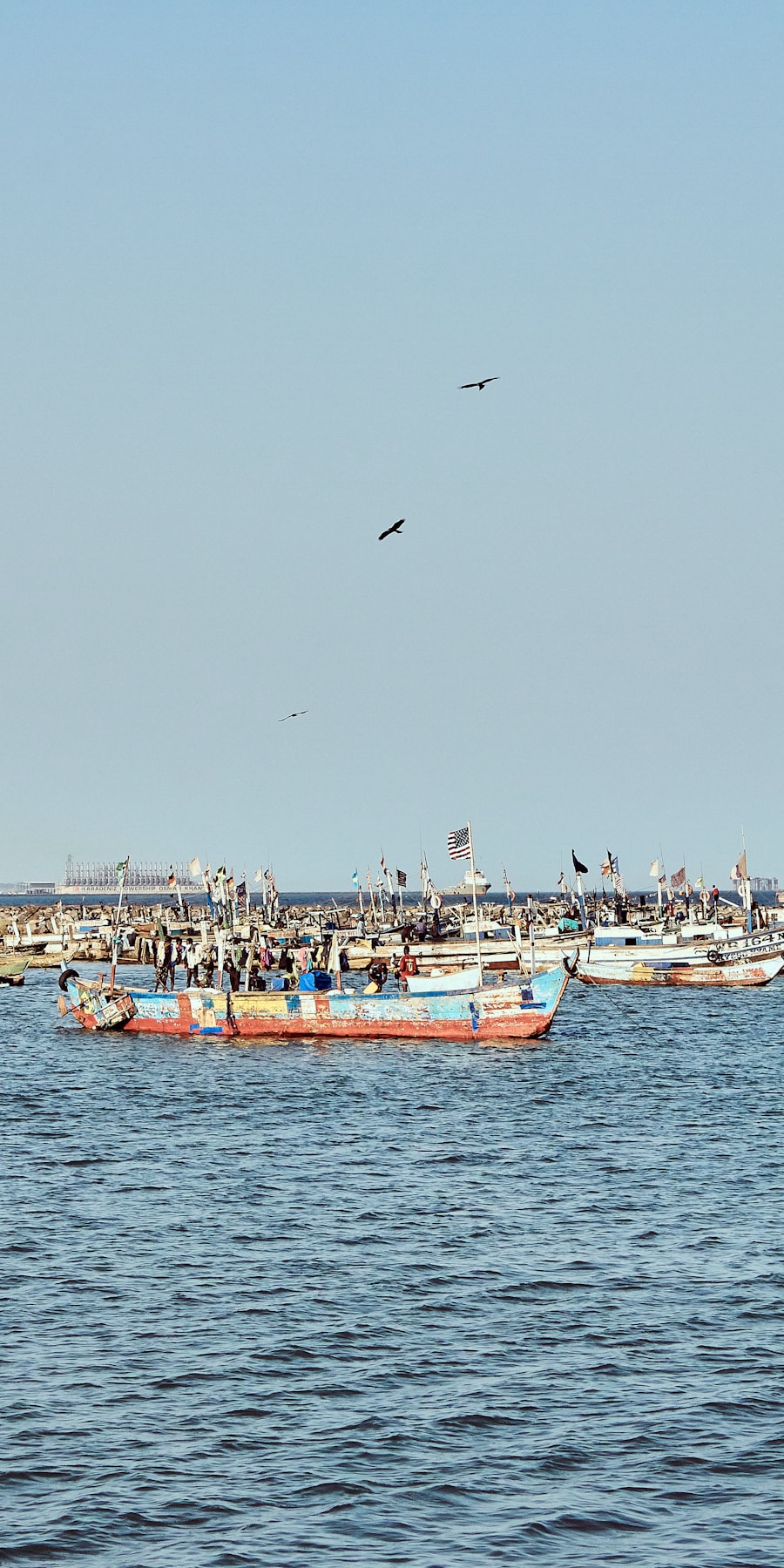Download links
How to install The Thrill of Ocean Fishing: A Beginner's Guide APK?
1. Tap the downloaded The Thrill of Ocean Fishing: A Beginner's Guide APK file.
2. Touch install.
3. Follow the steps on the screen.
Description
Ocean fishing, often referred to as saltwater fishing, encompasses a wide range of activities that take place in the vast expanses of the world’s oceans. This form of fishing can be pursued from various platforms, including boats, piers, and even directly from the shore. The ocean is home to a diverse array of fish species, each with its own unique behaviors, habitats, and seasonal patterns.
Understanding these fundamentals is crucial for anyone looking to engage in ocean fishing, whether for sport or sustenance.
These elements play a significant role in determining where fish are likely to be found at any given time.
For instance, many species of fish migrate seasonally in search of warmer waters or spawning grounds. Knowledge of these migratory patterns can greatly enhance a fisher’s chances of success. Additionally, understanding the different zones of the ocean—such as the intertidal zone, pelagic zone, and benthic zone—can help anglers identify the best spots to cast their lines.
Key Takeaways
- Ocean fishing involves catching fish and other marine species in the open sea, and requires knowledge of tides, currents, and marine life behavior.
- Essential gear for ocean fishing includes a sturdy fishing rod and reel, appropriate bait and lures, a tackle box, and safety equipment such as life jackets and first aid kits.
- Choosing the right location for ocean fishing involves considering factors such as the type of fish you want to catch, local regulations, and access to amenities like boat ramps or fishing piers.
- Techniques for successful ocean fishing include understanding fish behavior, using the right bait and lures, and adapting to changing weather and water conditions.
- Safety tips for ocean fishing include wearing appropriate clothing and gear, checking weather and sea conditions before heading out, and informing someone of your fishing plans and expected return time.
- Conservation and responsible fishing practices are important for preserving marine ecosystems, and include following catch limits, properly disposing of fishing waste, and releasing undersized or protected species.
Essential Gear and Equipment for Ocean Fishing
When it comes to ocean fishing, having the right gear is paramount. The equipment required can vary significantly based on the type of fishing being pursued—be it deep-sea fishing, surf fishing, or pier fishing. At a minimum, an angler will need a sturdy fishing rod and reel designed to withstand the rigors of saltwater environments.
Saltwater reels are typically constructed from corrosion-resistant materials such as stainless steel or aluminum to ensure longevity and reliability. In addition to the rod and reel, selecting the appropriate line is crucial. Monofilament lines are popular for their versatility and ease of use, while braided lines offer superior strength and sensitivity, making them ideal for targeting larger species.
Terminal tackle, including hooks, sinkers, and swivels, should also be chosen based on the specific fish species being targeted. For example, circle hooks are often recommended for catch-and-release practices as they tend to hook fish in the corner of the mouth, minimizing injury.
Choosing the Right Location for Ocean Fishing

Selecting the right location is one of the most critical aspects of successful ocean fishing. Different species inhabit various environments within the ocean, so understanding where to find them is essential. Coastal areas often provide excellent opportunities for anglers due to their rich biodiversity.
Rocky outcrops, sandy beaches, and estuaries are all prime locations where fish congregate to feed. In addition to geographical features, factors such as tidal movements and water temperature can influence fish behavior. Many anglers find that fishing during specific tidal phases—such as incoming or outgoing tides—can yield better results.
For instance, predatory fish like striped bass are known to be more active during these times as they hunt for baitfish that are swept along with the current. Furthermore, utilizing local knowledge or consulting with experienced fishermen can provide valuable insights into the best spots to fish at any given time.
Techniques and Strategies for Successful Ocean Fishing
| Technique | Success Rate |
|---|---|
| Trolling | 60% |
| Bottom Fishing | 45% |
| Casting | 50% |
| Drift Fishing | 55% |
| Chumming | 70% |
Successful ocean fishing often hinges on employing effective techniques and strategies tailored to the target species. One popular method is trolling, which involves dragging baited lines behind a moving boat. This technique is particularly effective for catching larger pelagic species such as tuna and marlin.
Trolling requires careful attention to speed and depth; using downriggers can help achieve the desired depth while maintaining optimal speed. Another effective strategy is bottom fishing, which targets species that dwell near the ocean floor, such as snapper and grouper. This technique involves dropping weighted baited hooks directly to the seabed and waiting for fish to bite.
Anglers often use live bait or cut bait to attract these bottom-dwelling species. Understanding the structure of the ocean floor—such as reefs, wrecks, or underwater ledges—can significantly enhance success rates when bottom fishing. Fly fishing has also gained popularity in saltwater environments, particularly among those targeting species like bonefish or tarpon in shallow flats.
This technique requires specialized gear and a different skill set compared to traditional rod-and-reel fishing but can be incredibly rewarding when executed correctly. The key lies in presenting the fly in a natural manner that mimics local prey.
Safety Tips for Ocean Fishing
Safety should always be a top priority when engaging in ocean fishing. The open sea can be unpredictable, with rapidly changing weather conditions posing significant risks to anglers. Before heading out, it is essential to check weather forecasts and sea conditions.
Sudden storms or high winds can create dangerous situations for those on small boats or kayaks. Equipping oneself with safety gear is equally important. Life jackets should be worn at all times when on a boat or kayak, regardless of how calm the waters may appear.
Additionally, carrying a first aid kit, flares, and a reliable communication device can be lifesaving in emergencies. It’s also advisable to inform someone on land about your fishing plans and expected return time. Understanding basic navigation skills is crucial for those venturing further offshore.
Familiarity with nautical charts and GPS devices can help prevent getting lost at sea. Moreover, knowing how to handle potential encounters with wildlife—such as sharks or jellyfish—can enhance safety while enjoying the thrill of ocean fishing.
Conservation and Responsible Fishing Practices

As ocean fishing continues to grow in popularity, it becomes increasingly important for anglers to adopt conservation-minded practices to protect marine ecosystems. Overfishing has led to significant declines in many fish populations worldwide, prompting regulatory measures aimed at sustainable fishing practices. Anglers should familiarize themselves with local regulations regarding size limits, bag limits, and seasonal closures to ensure compliance.
Catch-and-release practices have gained traction among responsible anglers who wish to minimize their impact on fish populations. Using barbless hooks can facilitate easier release while reducing injury to fish. Additionally, handling fish with care—wetting hands before touching them and minimizing air exposure—can increase their chances of survival after being released back into the water.
Participating in local conservation efforts or organizations dedicated to marine preservation can also make a positive impact. Many communities host beach clean-ups or habitat restoration projects that benefit both local wildlife and fishing opportunities. By fostering a culture of responsibility among anglers, we can help ensure that future generations will continue to enjoy the rich resources that our oceans provide.
If you are interested in ocean fishing, you may also enjoy reading about the benefits of using Facebook to connect with other fishing enthusiasts. Check out the article here to learn more about how social media can enhance your fishing experience.
FAQs
What is ocean fishing?
Ocean fishing, also known as deep sea fishing, is the practice of catching fish and other marine species in the open ocean. It typically involves fishing in waters that are deeper than 100 feet.
What types of fish can be caught through ocean fishing?
A wide variety of fish can be caught through ocean fishing, including tuna, marlin, swordfish, mahi-mahi, snapper, grouper, and many others. The specific types of fish that can be caught depend on the location and the time of year.
What are the methods used in ocean fishing?
Ocean fishing can be done using a variety of methods, including trolling, bottom fishing, jigging, and drift fishing. Trolling involves dragging lures or bait behind a moving boat, while bottom fishing involves dropping baited hooks to the ocean floor. Jigging involves using a weighted lure that is jerked up and down in the water, and drift fishing involves allowing the boat to drift with the current while fishing.
What equipment is needed for ocean fishing?
The equipment needed for ocean fishing includes fishing rods, reels, lines, hooks, lures, bait, and a boat. Depending on the specific type of ocean fishing, additional equipment such as downriggers, planers, and gaffs may also be used.
Where are popular ocean fishing destinations?
Popular ocean fishing destinations include the Gulf of Mexico, the Caribbean Sea, the Pacific Ocean, and the Atlantic Ocean. Specific locations within these regions, such as the Florida Keys, the Bahamas, Hawaii, and Costa Rica, are known for their excellent ocean fishing opportunities.





